#mark farina
Text
Mark Farina Halloween 2015 Live Set

This is a 3-hour audio recording of Mark Farina Halloween 2015 live set recorded in Orange County, California, on October 31, 2015.
Mark F'ing Farina. Easily in the top 5 deep house dj's. Probably in the top three. Maybe in the top 2?
Come on. I've never heard someone deliver such deep funk so consistently. Every. Single. Time.
So this is an interesting recording. It's not from my archive of classic rave recordings, nor something recorded recently. This is the audio counterpart to a live video stream I did all the way back in 2015.
Today, post Covid, the mention of live streaming elicits not even a yawn, we are so desensitized to it by now. For obvious reasons, the real streaming revolution happened 2019-2021. So I consider it a little feather in my cap that Rave Tapes was running good-sounding, multi-cam streams long before the trend took off.
The event? A cozy Halloween party hosted by Swerve Underground, the monthly event hosted by producer/dj Wally Callerio of Dufflebag Recordings and partner/dj 1st Nature. Wally has been a respected producer for years and had the right connections to pull some amazing names down to their Orange County venue, an hour south of Los Angeles. Names like Dereck Carter, Doc Martin, and other titans of the deep house movement.
So when the opportunity came up to do a live video stream of their Halloween party, taking place in a cool bohemian art space, with special guest Mark Farina? Pfft. It was the chance I had been waiting for, lol!
So, miraculously, the whole thing went off almost without a hitch. I say almost because I believe power was cut to the decks at one point. But considering it was a 2+ hour set, we forgot about it almost instantly after power was restored. Otherwise, the internet connection was good, my gear held up. It happened. In fact, here's the video evidence:
youtube
So this is the audio to that. While the audio in the YouTube version sounds unbelievably clean, this sounds even better. I finally went back and properly mixed the four audio channels, left-right stereo pair from the dj decks, then left-right stereo pair from the room mic.
It sounds absolutely pristine, if I do say so myself. I had to decide how loud to keep the mic levels vs the feed from the dj mixer. I think I am happy with these levels but I might change my mind and update the file at some point.
The content? Well, it's good ol' reliable Mark Farina. Of course every dj has a "look" and Farina certainly has his trademark glasses and scruffy chin. But man, when you see that familiar visage behind the decks and hear the funky bass line over the system, you know you have nothing to worry about. You know you're in for a good time.
Last time I saw Farina was EDC 2022 Bionic Jungle stage. It was very late Sat night. Actually very early morning Sunday about 4 am. Still dark and trippy.
Saturday. Hump day. People are grinding in more ways than one. And Mark is closing out little Bionic Jungle. I don't mean little in a condescending way. Actually, the inconspicuousness of the stage is what made it so great. It was def an intimate space and you could get right up close to your favorite deep house dj's. My only issue that night was that it wasn't going to yield a complete Rave Tapes recording. Yes, I recorded while I danced there. But knew I was arriving late because of another set, and I knew I was leaving early because I don't like getting stuck in parking. While there may have been an hour of material, the other issue was there was a nasty buzzing coming from some vibrating stage rigging.
So that's probably why I'm mentioning EDC here, because it's a good opportunity to discuss it since there will never be a Rave Tapes recording from that night to link it to.
I guess my point is, be it at Swerve Halloween 2015, EDC 2022, or the other times I've heard Farina play, Farina always, ALWAYS, delivers a top shelf performance.
While I'm always eager to bring these live sets to you for the sake of your listening pleasure, truth be told, I get excited when posting these because in most cases it's the first time I get to have easy SoundCloud access to the mixes, too.
And with this one, I'm over-the-moon thrilled for completely selfish reasons ;)
Nevertheless, please enjoy!
Follow and support Mark Farina!
Mark Farina Instagram
Mark Farina Beatport
Mark Farina Spotify
Mark Farina SoundCloud
4 notes
·
View notes
Text
Mark Farina - Gunfire
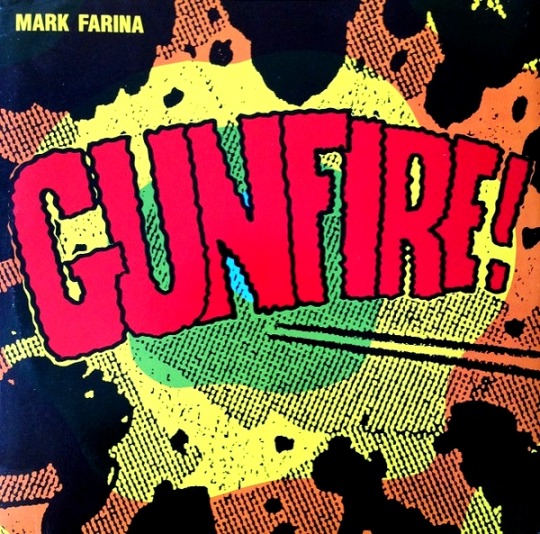

3 notes
·
View notes
Text
youtube
I’m like a deadhead but for Mark Farina
5 notes
·
View notes
Audio
heard this song walking past a group of people in golden gate park one day in 2012. I remembered the lyrics enough to look them up once I got home and it’s been a nostalgic favorite for me since then.
1 note
·
View note
Photo
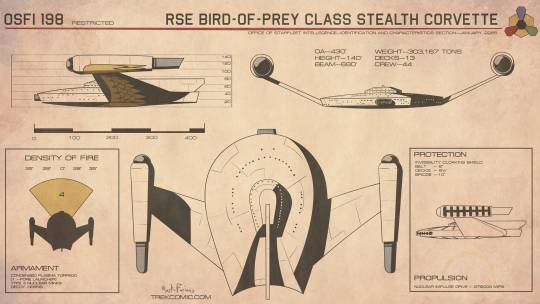
Romulan Bird-of-Prey Naval Chart by Mark Farinas
#Star Trek#Star Trek: The Original Series#Romulan#Romulan Star Empire#Bird of Prey#Sci-Fi#Mecha#Spaceship#Mark Farinas
102 notes
·
View notes
Note
"Happy birthday, Mark!", Farina grinned, pressing her hands on to the tactician's shoulders and pressing her down gently onto the seat and giving her a quick little shoulder massage too. "Just for today, I'll be taking care of all your personal needs." She barked out a quick laugh and a just-as-quick teasing wink. "And free of charge too. A bargain! Now, ya got anything needing taking care of there?"
"Ahh..." Mark is pushed into the chair, and her darting eyes softened as Farina laid out her terms. A slow nod, as a smile spread across her lips. "I... okay..." She reached for her skirt, to fiddle with the fabric.
A long pause, as the tactician's mind worked. What needed to be done...? What had she not already done (with her limited strength, of course)...?
"...I... I need to eat something..." she mumbled, finally. Her eyes flicked back up to Farina, an idea lighting behind them. "...would you eat... with me?" Her smile grew, even wider. "I have a cake... I can't eat it all alone."
#winds across the plains (ic)#together we ride! (ask)#pegasus knight (farina)#THANK YOU OMG#THIS WAS SO SO CUTE...#exploded#sorry it's late mark :sob:#february 1st (birthday)
6 notes
·
View notes
Text
grinding sonic mania for top ten because of that post about using tetris to displace unwanted thoughts :/ it's hilarious that i have a top 15 all emeralds time but i only just now broke the top thousand for green hill zone. wr is like half my time. ON THE SAME ROUTE. i gain all this time back by having top 50 scores in several individual levels that the top ten haven't optimized. trials and tribulations of being a tails main i guess. honestly i think i gain whole minutes over wr runs in the rare instances i actually use flying to access much shorter routes than sonic can. meanwhile normal players are gaining 2s every time they drop dash, which i never learned to do. INSANE. i would do numbers on twitch if they'd let me post feet
#and yes. i am listening to cyberjive life. THE quintessential rave tape according to the youtube comments#starting with an unremixed mj acapella is BRILLIANT. you get all of the intricacies heard through tape distortion#he was still doing shows as recently as last year#WITH MARK FARINA? i'm so mad i missed that lmao
5 notes
·
View notes
Text
books i read in 2023
my goal was to read a book a week and while the timeline wasn't perfectly even, i did manage to get it to add up (and then some!). this year i focused on religion and philosophy as well as classics (of which im counting both as traditional "ancient or pre-modern famous and outstanding" types of books, but also famous more modern books). i also bolded some books that were really good in my opinion that have really stuck with me so if you are interested in the genre i'd suggest those
st joan by bernard shaw (play)
mary and your everyday life by bernard haring (theology)
theology of liberation by gustavo gutierrez (theology)
magnificat by elizabeth ruth obbard (theology)
piedras labradas by victor montejo (poetry)
the boy who was raised as a dog by bruce perry and maia szalavitz (psychology)
4 great plays by ibsen - the dollhouse, ghosts, the wild duck, and an enemy of the people by henry ibsen (plays obvi)
the night of the iguanas by tennessee williams (play)
being logical by dq mcinerny (idk sociology maybe? it was about recognizing and avoiding bad-faith arguments and logical fallacies)
the alchemist by paolo coelho (classics)
frankenstein by mary shelly (classics)
an american tragedy by theodore dreiser (classics)
is this wifi organic? by dave farina (idk how to classify this one either but it was also about recognizing bad-faith arguments, specifically when it comes to pseudoscience)
the nicaraguan church and the revolution by joseph muligan (theology, history)
catholic social teaching: our best kept secret by peter henriot, edward deberri, and michael schultheis (theology)
beowulf (classics)
sapiens by yuval noah harari (anthropology)
the church and the second sex by mary daly (theology)
mary in the new testament edited by raymond brown, karl donfried, joseph fitzmyer, and john reumann (theology)
a catholic devotion to mary by oscar lukefahr (theology)
1001 nights / arabian nights trans. sir richard burton (classics)
a house on mango street by sandra cisneros (poetry)
primary source readings in catholic church history edited by robert feduccia and nick wagner (theology)
doing faithjustice by fred kammer, sj (theology)
winds of change by isaac asimov (sci-fi)
the sound and the fury by william faulkner (classics)
una ciudad de la españa cristiana hace mil años by claudio sanchez-albornoz (history)
the glass menajerie by tennessee williams (play)
reinventing the enemy's language by joy harjo and gloria bird (indigenous women writers anthology)
the great gatsby by f scott fitzgerald *reread* (classics)
the bell jar by sylvia plath (classics)
the kite runner by khaled hosseini (classics)
one nation, under gods by peter manseau (history)
development as freedom by amartya sen (economic / political philosophy)
women in ministry: four views edited by bonnidell and robert g clouse (practical theology)
mother of god: a history of the virgin mary by miri rubin (theology / history)
a study in scarlet and the sign of four by sir arthur conan doyle (classics)
adventures of sherlock holmes by sir arthur conan doyle (classics)
the casebook of sherlock holmes by sir arthur conan doyle (classics)
the valley of fear by sir arthur conan doyle (classics)
the memoirs of sherlock holmes by sir arthur conan doyle (classics)
the return of sherlock holmes by sir arthur conan doyle (classics)
the hound of the baskervilles by sir arthur conan doyle (classics)
his last bow by sir arthur conan doyle (classics)
the fundamentals of ethics, fourth edition by russ shafer landau (philosophy)
dracula by bram stoker (classics) (yes i'm counting dracula daily)
desde mi silencio by carmen gomez (poetry)
happiness in this life, excerpts from the homilies of pope francis (theology)
the vigilante / the snake / the chrysanthemums by john steinbeck (classics)
quest for the living god by sister beth johnson *reread* (theology)
the adventures of tom sawyer by mark twain (classics)
the adventures of huckleberry finn by mark twain (classics)
the boys in the boat by daniel james brown (history)
and that's all folks, ending the year with some classics, plus my mom insisted i read the boys in the boat while im home for christmas because she wanted to see the movie lol. i got so many books for christmas so i'll be startin off strong next year too, and my goal is finishing my collection of john steinbeck, by which i mean obtaining as well as reading everything i can find by him. here's my list from 2022 and i'll see you next year
#books#bookblr#reading#literature#classic lit#john steinbeck#philosophy#religion#classics#sherlock holmes#mystery#psychology#theology#history#poetry#sociology
23 notes
·
View notes
Photo

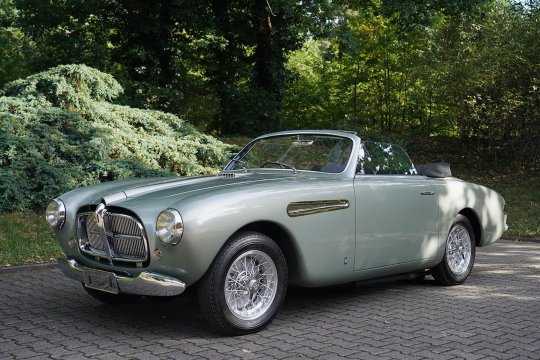

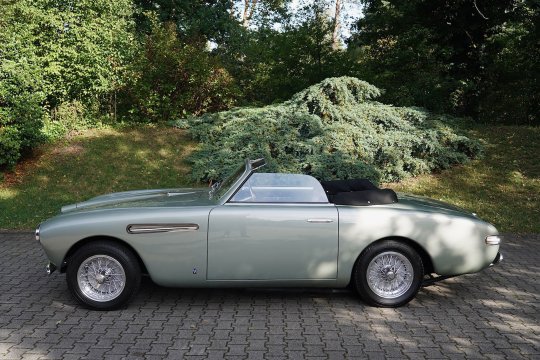






Ferrari 212 Inter Vignale Cabriolet
The Ferrari 212 Inter, has been considered the first successful model within the Ferrari produced in series, since it also did so with a wide variety of bodies: berlinetta, cabriolet and coupé. The 212 Inter incorporated bodies -it did not have a monocoque chassis-, from designers such as Ghia, Pininfarina, Stabilimenti Farina, Touring, Vignale and cabriolet versions from the British Abbott. It also marked the beginning of a long alliance between Ferrari and Pininfarina. On the outside, a long hood to shelter its V12, two large round headlights, its attractive chrome grille and an air intake next to the front fender stood out for any of its bodies. Its engine was the typical V12 of the house, the work of Gioacchino Colombo. With an inclination between benches of 60º and a diameter per stroke of 68×59 mm. It had a total displacement of 2.6 liters, had 24 valves in total and was placed in the longitudinal front position, just behind the front axle. The feeding was through a Weber 36 DCF double body carburettor, with the option of a kit of three carburettors for the most burned. The final power was between 130 and 150 CV at 6,500 revs for the configuration of a single carburetor, reaching 165 CV with the triple, being able to speed up the tachometer up to 6,900 revs in both cases.
Power was transmitted to the rear axle through a fully synchronized five-speed manual gearbox. As for its brake equipment, it mounted ancient and unsportsmanlike drum brakes on both axles inside some beautiful 15-inch-diameter spoked wheels and 175-millimeter-wide tires. The 212 Inter would be replaced just a year after its birth with fewer than 90 units built for the 250.
#Ferrari 212 Inter Vignale Cabriolet#Ghia#Pininfarina#Stabilimenti Farina#Touring#Vignale#Abbott#Gioacchino Colombo#250
108 notes
·
View notes
Text
Farina felt disgusting.
The sun was only beginning to sink to the horizon, marking the end of day 1, and she was caked in dried blood, goo from the aliens she and Linden had eviscerated in Space Race, and everything that was miraculously free of these two substances was coated in a layer of her own sweat.
She'd attempted again to get back into the Cornucopia first, but still found the exit doors firmly sealed. She wondered if Oxford thought she had abandoned him, or maybe if he'd gone looking for her and gotten locked out too. She had a suspicion that the only way back in was via the "Castle Coaster" again, but after the Space Race incident, she deemed that a later problem. She didn't know if she could stomach it just yet, her nerves were shot and she felt awful.
So she kept walking, sticking to the long shadows along rides cast by the setting sun, knife at the ready in her hand. She found herself in a part of the park that appeared water-based, much to her relief-- she was extremely thirsty, and if nothing else, she needed to wash off.
Like an oasis in a desert, she came across a wide, gradually sloping pool. She could have sobbed in relief. She waded into it quickly, splashing water up her shorts as she knelt down, cupped her hands and lifted some of the water. It had a distinct chemical smell, to her dismay. No way she could drink it, but... it was probably okay to bathe in, right?
She stripped down to her undergarments (she didn't feel desperate enough to show Panem all the goods just yet), and plunged herself into the water, tipping her head back and letting herself soak for a moment. She then started rubbing at her skin stubbornly, watching the blood and dark goo melt out around her like ink in water as it came free from her.
There was a splash behind her. She whipped around, hair snapping around to smack against her shoulder. Her knife was held out at arm's length to the sound-- made by Finch. "You again?" she groaned, but made no move to attack. Still, she was wary of Finch, the dark, splotchy bruise on her ribs throbbing as though it sensed the proximity of its perpetrator.
@finch-farran

9 notes
·
View notes
Text
L'🐘 Bianco

Nel BURrino di Mark Twain che ho letto qualche settimana fa, c'è un racconto che si intitola My Late Senatorial Secretaryship [ca. 1867], tradotto in italiano come: Il mio ex-impiego di segretario di un senatore [Quello che è nel titolo della raccolta a qualche cinéphile potrebbe ricordare un episodio del film "Il fantasma della libertà" di Luis Buñuel]. A un certo punto del racconto si trova una poesiuola di poche righe:
Cecco Bilecco infilzò in uno stecco:
lo stecco si rompe e Cecco va sul ponte;
il ponte va in rovina e Cecco s'infarina:
la farina si staccia e Cecco si sculaccia
Canzoncina per bambini che mi recitavano (nonno? mamma? nonna?) tenendomi seduto sulle gambe e facendomi sobbalzare. La prima frase però era: "Cecco Bilecco infilato in uno stecco"; da quanto ho cercato rapidamente sembra essere una cantilena toscana.
Controllando l'originale di Mark Twain si legge invece:
Jack and Gill went up the hill
To draw a pail of water;
Jack fell down and broke his crown,
And Gill came tumbling after.
La traduttrice dei racconti, nel 1952, era Oriana Previtali neé Gui (1912-1997), figlia di Vittorio, direttore d’orchestra e fondatore del Maggio musicale fiorentino e moglie di Ferdinando Previtali, come il suocero direttore d'orchestra e compositore.
Ho decisamente apprezzato che la Previtali non si limitasse a volgere in italiano l'originale ma lo sostituisse con un'omologa nursery rhyme nostrana!
Mark Twain, Il furto dell'elefante bianco e altri racconti, Milano, Rizzoli, 1952 [Trad. O. Previtali]
10 notes
·
View notes
Text
Mark Farina - Cha Cha Cha


1 note
·
View note
Text
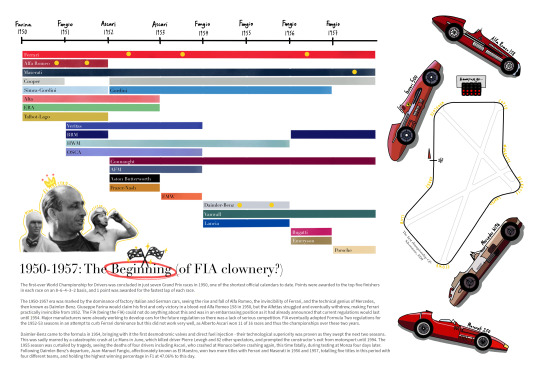
F1: a colorised history 1/10 - text and graphics mine with thanks to Wikipedia and Reddit
text in photo below the cut :) if you spot any mistakes please let me know!
The first-ever World Championship for Drivers was concluded in just seven Grand Prix races in 1950, one of the shortest official calendars to date. Points were awarded to the top five finishers in each race on an 8–6–4–3–2 basis, and 1 point was awarded for the fastest lap of each race.
The 1950-1957 era was marked by the dominance of factory Italian and German cars, seeing the rise and fall of Alfa Romeo, the invincibility of Ferrari, and the technical genius of Mercedes, then known as Daimler-Benz. Giuseppe Farina would claim his first and only victory in a blood-red Alfa Romeo 158 in 1950, but the Alfettas struggled and eventually withdrew, making Ferrari practically invincible from 1952. The FIA (being the FIA) could not do anything about this and was in an embarrassing position as it had already announced that current regulations would last until 1954. Major manufacturers were already working to develop cars for the future regulation so there was a lack of serious competition. FIA eventually adopted Formula Two regulations for the 1952-53 seasons in an attempt to curb Ferrari dominance but this did not work very well, as Alberto Ascari won 11 of 16 races and thus the championships over these two years, remaining the last Italian driver to do so.
Daimler-Benz came to the formula in 1954, bringing with it the first desmodromic valves and direct fuel injection - their technological superiority was proven as they swept the next two seasons. This was sadly marred by a catastrophic crash at Le Mans in June, which killed driver Pierre Levegh and 82 other spectators, and prompted the constructor's exit from motorsport until 1994. The 1955 season was curtailed by tragedy, seeing the deaths of four drivers including Ascari, who crashed at Monaco before crashing again, this time fatally, during testing at Monza four days later.
Following Daimler-Benz’s departure, Juan-Manuel Fangio, affectionately known as El Maestro, won two more titles with Ferrari and Maserati in 1956 and 1957, totalling five titles in this period with four different teams, and holding the highest winning percentage in F1 at 47.06% to this day.
#timeline#this is basically as close to fanart as i will ever get#tiny drawings of the 1950s cars#this was so ridiculously fun to do#can you believe it stemmed from watching seb name the wdcs in order one too many times#halfway through my fifth rewatch i was like#hey i don't really know about half of these people..#and so now i have taken it upon myself to do a Full And Comprehensive history of motorsport...#anyway i hope this is useful or at least nice to look at :")#because a lot of timeline spreadsheets ive seen are just uh. unusable#claire's edits#alberto ascari#juan manuel fangio#giuseppe farina#classic f1#f1#formula 1#i lowkey feel like this was designed very badly............... but OK#this was created for an audience of one (1) and that's me.#<3
15 notes
·
View notes
Text
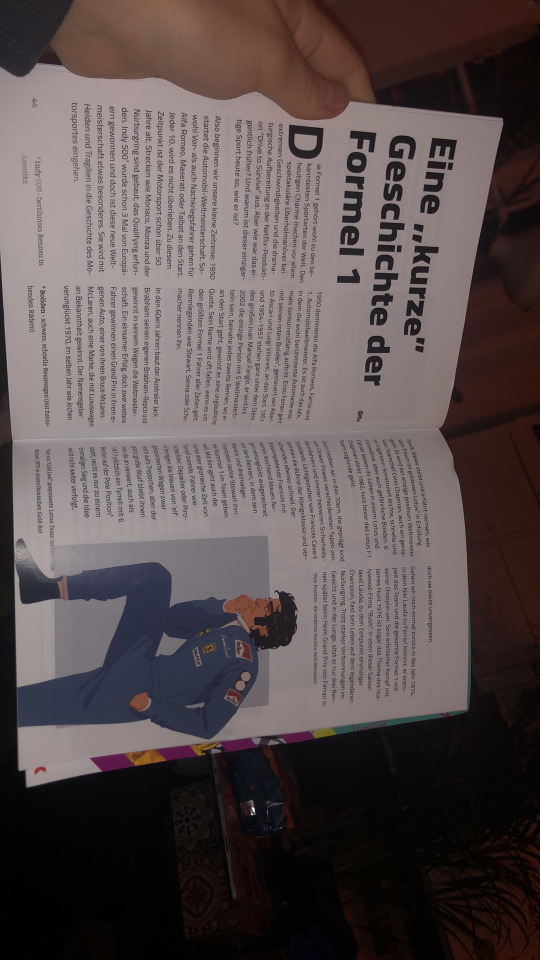

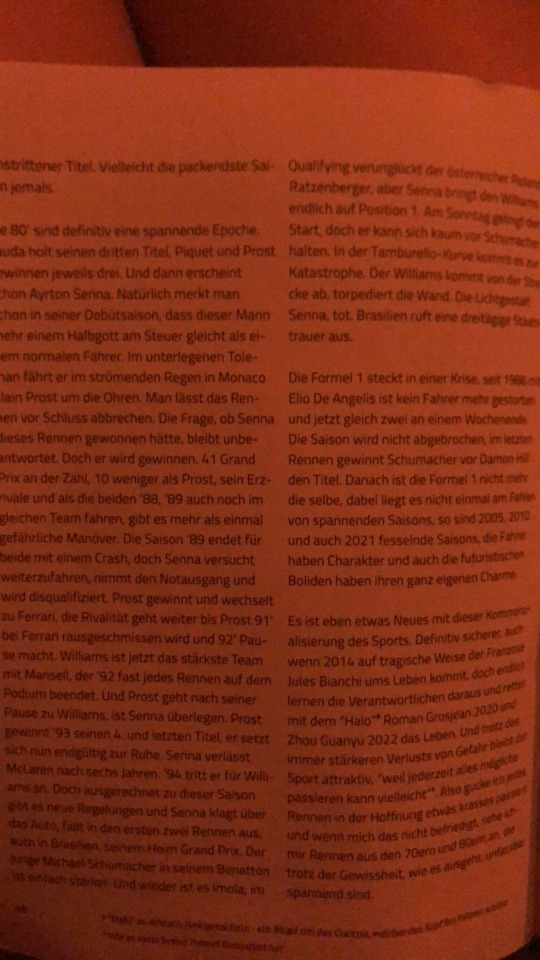
Omg @bluesourkiwi
That's my article in a Magazine of my school!!
Die Formel 1 gehört wohl zu den bekanntesten Sportarten der Welt. Den heutigen Charme machen vor allem spektakuläre Überholmanöver bei extremen Geschwindigkeiten und die dramaturgische Aufbereitung in der Netflix-Produktion “Drive to Survive" aus. Aber wie war das eigentlich früher? Und warum ist dieser einzigartige Sport heute so, wie er ist?
Also beginnen wir unsere kleine Zeitreise: 1950 startet die Automobil-Weltmeisterschaft. Sowohl Vor- als auch Nachkriegsfahrer gehen für Alfa Romeo, Maserati oder Talbot an den Start. Jeder 10. wird es nicht überleben. Zu diesem Zeitpunkt ist der Motorsport schon über 50 Jahre alt. Strecken wie Monaco, Monza und der Nürburgring sind gebaut, das Qualifying erfunden. Indy 500 wurde schon 3 Mal von Europäern gewonnen und doch ist diese neue Weltmeisterschaft etwas besonderes. Sie wird mit Helden und Tragiken in die Geschichte des Motorsportes eingehen.
1950 dominieren die Alfa Romeos, Farina wird 1. Automobilweltmeister. Es ist auch das Jahr, in dem die wohl berühmteste Automarke erstmals konkurrenzfähig auftritt. Enzo Ferrari geht mit seinen roten Boliden, gesteuert von Alberto Ascari und Luigi Villoresi, an den Start. 1951 und 1954-1957 stehen ganz unter dem Stern des großen Juan Manuel Fangio, er wird bis 2002 die einzige Person mit 5 Weltmeistertiteln sein, beinahe jedes zweite Rennen, wo er an den Start geht, gewinnt er, eine unglaubliche Quote. Sein Name wird oft fallen, wenn es um den größten Formel 1 Fahrer aller Zeiten geht. Rennlegenden wie Stewart, Senna oder Schumacher nennen ihn.
In den 60ern Jahren baut der Australier Jack Brabham seinen eigenen Brabham-Repco und gewinnt in seinem Wagen die Weltmeisterschaft. Ein einsamer Erfolg, doch zwei weitere Fahrer gewinnen einen Grand Prix in ihrem eigenen Auto, einer von ihnen Bruce McLaren. McLaren, auch eine Marke, die mit Luxuswagen an Bekanntheit gewinnt. Der Namensgeber verunglückt 1970, im selben Jahr wie Jochen Rindt, dieser stirbt und erfährt niemals, wie sein Traum im goldenen Lotus in Erfüllung geht. Er wird der einzige posthum Weltmeister. Sein Teamchef Colin Chapman, auch ein genialer Ingenieur, konstruiert leichte, schnelle und innovative, aber auch gefährliche Boliden. 6 Fahrer lassen ihr Leben in einem Lotus und Chapman stirbt 1982, kurz bevor das Lotus F1 Team zugrunde geht.
Doch bleiben wir in den 70ern, die geprägt sind von Flower Power, verschiedensten Typen von Rennfahrern und immer besseren Sicherheitsstandards. Lichtgestalten wie Francois Cevert betreten die Bühne der Königsklasse und verschwinden ebenso schnell. Der Klavierspielende Francois mit seinen leuchtend blauen Augen verunglückt ausgerechnet vor dem Rennen, in dem sein Mentor und dreimaliger Champion Jackie Stewart ihm die Nummer 1 im Team geben will. Mit ihm geht auch die kurze aber glorreiche Zeit von Tyrrell zuende, Fahrer wie Scheckter, Depailler oder Pironi bringen die blauen von ‘elf’ gesponserten Wagen zwar noch aufs Treppchen, aber der ganz große Wurf bleibt ihnen von da an verwert, auch als 1977 plötzlich ein Tyrrell mit 6 Reifen auf der Pole Position steht, reicht es nur zu einem einmaligen Sieg und die Idee wird nicht weiter verfolgt, doch sie bleibt unvergessen.
Gehen wir noch einmal zurück in das Jahr 1974, in dem Niki Lauda zu Ferrari kommt, er krempelt das Team und die gesamte Formel 1 mit seiner Disziplin um. Sein erbitterter Kampf mit James Hunt 1976 ist sogar das Thema des Hollywood-Films “Rush”. In eben dieser Saison lässt Lauda, zu dem Zeitpunkt einmaliger Champion, fast sein Leben auf dem legendären Nürburgring. Trotz starker Verbrennungen im Gesicht und in der Lunge, sitzt er nur drei Rennen später beim Heim Grand Prix von Ferrari in Monza wieder im Auto und beendet das Rennen sogar vor dem von Ferrari engagierten Ersatzfahrer Carlos Reutemann. Die Verbindung Lauda-Ferrari scheitert um nur einen Punkt am WM-Titel ‘76, doch gewinnt ‘77 die Meisterschaft und dann Trennen sich die Wege, Lauda fährt noch eine Saison für Brabham und setzt sich 1979 vorerst zur Ruhe, ihn reizt die Formel 1 nicht mehr. Und so wird ‘78 bei Ferrari ein Platz frei, ihn bekommt der Kanadier Gilles Villeneuve. Sein Fahrstil extravagant, quer und vor allem schnell! Enzo Ferrari liebt den gerade einmal 1.68m großen Helden, nennt ihn seinen kleinen Prinz. Dennoch ist er im Team bis 1981 nicht die Nummer 1 und als 1979 die Roten Wagen die Saison dominierten, gewinnt der Südafrikaner Jody Scheckter. Villeneuve wird 2..
1980, die erste Saison, die nun offiziell die Formel 1 Weltmeisterschaft heißt, sind die Ferraris nicht konkurrenzfähig. Alan Jones gewinnt die erste Weltmeisterschaft für Williams, das Trio der drei ältesten noch aktiven Teams, ist gebildet. Insgesamt werden mehr als die Hälfte aller Siege auf das Konto einer dieser drei Teams gehen. Aber zurück nach 1981, denn mit dem 126 CK (Ferrari) hat Villeneuve nun das Werkzeug um Weltmeister zu werden, doch ein neuer Teamkollege macht ihm das Leben schwer, Didier Pironi einer von 7 Franzosen auf dem Feld ist macht ihm nun Konkurrenz im eigenen Team. 1981 gewinnt jedoch ein ganz anderer. Der Brasilianer Nelson Piquet nutzt die Inkonstanz der Ferraris.
Und dann folgt 1982, die Saison mit den meisten unterschiedlichen Siegern, 11 an der Zahl. Niki Lauda ist zurück und noch vor dem ersten Rennen in Kyalami streiken die Fahrer. Eine Nacht schließen sich alle zusammen in einem Hotelzimmer ein und protestieren gegen die neue Superlizenz, sie macht die Fahrer zum Eigentum der Teamchefs. Auf Druck der Fahrer ändern die Verantwortlichen die Verträge. Dieser Start leitet eine turbulente Saison ein. Die Renault scheinen schnell zu sein, die Ferraris sind endlich stark, auch Williams ist mit seinem neuen Fahrer Keke Rosberg konkurrenzfähig. Die aufgeladene Situation bei Ferrari eskaliert in Imola. Pironi schnappt Villeneuve in der vorletzten Runde den Sieg weg. Gegen die Teamorder. Dieser Umstand zwingt Villeneuve im Qualifying in Zolder zu einer riskanten Runde, aus der er nie zurückkommen wird. Er kollidiert mit Jochen Mass und stirbt am 8. Mai im Krankenhaus. Wenig später wird die Strecke in Kanada nach ihm benannt und sein Sohn Jacques schenkt dem Namen Villeneuve 15 Jahre später doch noch eine Weltmeisterschaft, doch sein Traum bleibt unerfüllt. Die Saison geht weiter. Pironi setzt sich an die Spitze der Wertung, doch beim Grand Prix von Kanada auf dem neu benannten Circuit Gilles Villeneuve nimmt das Unglück seinen lauf. Der junge Italiener Riccardo Paletti fährt beim Start in das Heck von Pironi. Paletti stirbt noch vor Ort. In Hockenheim, erneut im Qualifying, crasht Pironi mit Alain Prost, dem späteren ersten französischen Weltmeister. Pironi bricht sich beide Beine und wird nie wieder ein Rennen bestreiten. Und der Titel? Der geht an Keke Rosberg, der gerade einmal einen Sieg in dieser Saison zählen kann. Ein umstrittener Titel. Vielleicht die packendste Saison jemals.
Die 80’ sind definitiv eine spannende Epoche. Lauda holt seinen dritten Titel, Piquet und Prost gewinnen jeweils drei. Und dann erscheint schon Ayrton Senna. Natürlich merkt man schon in seiner Debütsaison, dass dieser Mann mehr einem Halbgott am Steuer gleicht als einem normalen Fahrer. Im unterlegenen Toleman fährt er im strömenden Regen in Monaco Alain Prost um die Ohren. Man lässt das Rennen vor Schluss abbrechen. Die Frage, ob Senna dieses Rennen gewonnen hätte, bleibt unbeantwortet. Doch er wird gewinnen. 41 Grand Prix an der Zahl, 10 weniger als Prost, sein Erzrivale und als die beiden ‘88, ‘89 auch noch im gleichen Team fahren, gibt es mehr als einmal gefährliche Manöver. Die Saison ‘89 endet für beide mit einem Crash, doch Senna versucht weiterzufahren, nimmt den Notausgang und wird disqualifiziert. Prost gewinnt und wechselt zu Ferrari, die Rivalität geht weiter bis Prost 91’ bei Ferrari rausgeschmissen wird und 92’ Pause macht. Williams ist jetzt das stärkste Team mit Mansell, der ‘92 fast jedes Rennen auf dem Podium beendet. Und Prost geht nach seiner Pause zu Williams, ist Senna überlegen. Prost gewinnt ‘93 seinen 4. und letzten Titel, er setzt sich nun endgültig zur Ruhe. Senna verlässt McLaren nach sechs Jahren. ‘94 tritt er für Williams an. Doch ausgerechnet zu dieser Saison gibt es neue Regelungen und Senna klagt über das Auto, fällt in den ersten zwei Rennen aus, auch in Brasilien, seinem Heim Grand Prix. Der junge Michael Schumacher in seinem Benetton ist einfach stärker. Und wieder ist es Imola, im Qualifying verunglückt der österreicher Roland Ratzenberger, aber Senna bringt den Williams endlich auf Position 1. Am Sonntag gelingt der Start, doch er kann sich kaum vor Schumacher halten. In der Tamburello-Kurve kommt es zur Katastrophe. Der Williams kommt von der Strecke ab, torpediert die Wand. Die Lichtgestalt Senna, tot. Brasilien ruft eine dreitägige Staatstrauer aus.
Die Formel 1 steckt in einer Krise, seit 1986 mit Elio De Angelis ist kein Fahrer mehr gestorben und jetzt gleich zwei an einem Wochenende. Die Saison wird nicht abgebrochen, im letzten Rennen gewinnt Schumacher vor Damon Hill den Titel. Danach ist die Formel 1 nicht mehr die selbe, dabei liegt es nicht einmal am Fehlen von spannenden Saisons, so sind 2005, 2010 und auch 2021 fesselnde Saisons, die Fahrer haben Charakter und auch die futuristischen Boliden haben ihren ganz eigenen Charme.
Es ist eben etwas Neues mit dieser Kommerzialisierung des Sports. Definitiv sicherer, auch wenn 2014 auf tragische Weise der Franzose Jules Bianchi ums Leben kommt, doch endlich lernen die Verantwortlichen daraus und retten mit dem “Halo” Roman Grosjean 2020 und Zhou Guanyu 2022 das Leben. Und trotz des immer stärkeren Verlusts von Gefahr bleibt der Sport attraktiv, “weil jederzeit alles mögliche passieren kann vielleicht”. Also gucke ich jedes Rennen in der Hoffnung etwas krasses passiert und wenn mich das nicht befriedigt, sehe ich mir Rennen aus den 70ern und 80ern an, die trotz der Gewissheit, wie es ausgeht, unfassbar spannend sind.
#f1#classic f1#retro f1#formula 1#f1 1980s#elio de angelis#niki lauda#gilles villeneuve#james hunt#nigel mansell#alain prost#nelson piquet#ayrton senna#f1 1970s#journalism
35 notes
·
View notes

